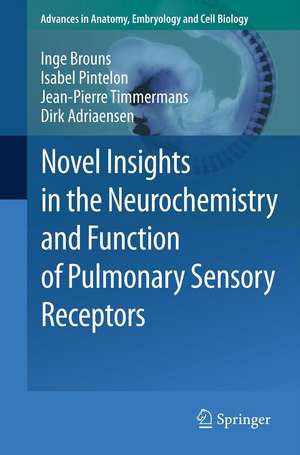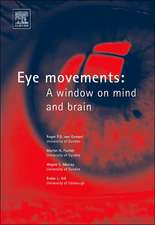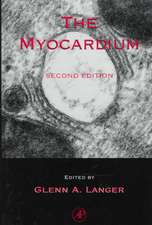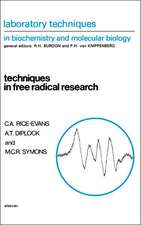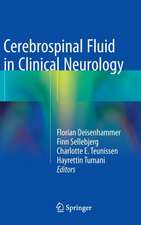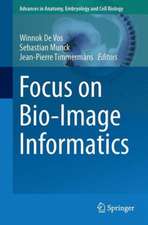Novel Insights in the Neurochemistry and Function of Pulmonary Sensory Receptors: Advances in Anatomy, Embryology and Cell Biology, cartea 211
Autor Inge Brouns, Isabel Pintelon, Jean-Pierre Timmermans, Dirk Adriaensenen Limba Engleză Paperback – 6 oct 2011
Din seria Advances in Anatomy, Embryology and Cell Biology
- 5%
 Preț: 1146.33 lei
Preț: 1146.33 lei - 5%
 Preț: 721.19 lei
Preț: 721.19 lei - 15%
 Preț: 637.13 lei
Preț: 637.13 lei -
 Preț: 381.81 lei
Preț: 381.81 lei - 15%
 Preț: 644.95 lei
Preț: 644.95 lei - 5%
 Preț: 1025.16 lei
Preț: 1025.16 lei - 15%
 Preț: 689.97 lei
Preț: 689.97 lei - 15%
 Preț: 577.07 lei
Preț: 577.07 lei - 15%
 Preț: 580.36 lei
Preț: 580.36 lei - 5%
 Preț: 393.51 lei
Preț: 393.51 lei -
 Preț: 408.66 lei
Preț: 408.66 lei -
![Die Schlüpfdrüse der Geburtshelferkröte (Alytes o. obstetricans [LAURENTI]) und anderer Froschlurche](https://i4.books-express.ro/bs/9783662239742/die-schluepfdruese-der-geburtshelferkroete-alytes-o-obstetricans-laurenti-und-anderer-froschlurche.jpg) Preț: 408.27 lei
Preț: 408.27 lei - 5%
 Preț: 1090.61 lei
Preț: 1090.61 lei - 5%
 Preț: 705.11 lei
Preț: 705.11 lei - 5%
 Preț: 706.04 lei
Preț: 706.04 lei - 5%
 Preț: 357.61 lei
Preț: 357.61 lei - 5%
 Preț: 704.59 lei
Preț: 704.59 lei - 5%
 Preț: 705.11 lei
Preț: 705.11 lei - 5%
 Preț: 359.42 lei
Preț: 359.42 lei - 5%
 Preț: 711.52 lei
Preț: 711.52 lei - 15%
 Preț: 635.47 lei
Preț: 635.47 lei - 15%
 Preț: 631.72 lei
Preț: 631.72 lei - 15%
 Preț: 633.35 lei
Preț: 633.35 lei - 15%
 Preț: 632.37 lei
Preț: 632.37 lei - 5%
 Preț: 706.60 lei
Preț: 706.60 lei - 15%
 Preț: 631.07 lei
Preț: 631.07 lei - 5%
 Preț: 707.13 lei
Preț: 707.13 lei - 5%
 Preț: 707.33 lei
Preț: 707.33 lei - 5%
 Preț: 359.60 lei
Preț: 359.60 lei - 5%
 Preț: 707.69 lei
Preț: 707.69 lei - 5%
 Preț: 707.13 lei
Preț: 707.13 lei - 5%
 Preț: 708.06 lei
Preț: 708.06 lei - 5%
 Preț: 706.41 lei
Preț: 706.41 lei - 5%
 Preț: 708.78 lei
Preț: 708.78 lei - 5%
 Preț: 705.68 lei
Preț: 705.68 lei - 5%
 Preț: 705.11 lei
Preț: 705.11 lei - 5%
 Preț: 706.77 lei
Preț: 706.77 lei - 15%
 Preț: 635.15 lei
Preț: 635.15 lei - 15%
 Preț: 631.07 lei
Preț: 631.07 lei - 5%
 Preț: 706.77 lei
Preț: 706.77 lei - 5%
 Preț: 706.04 lei
Preț: 706.04 lei - 5%
 Preț: 710.79 lei
Preț: 710.79 lei - 5%
 Preț: 705.32 lei
Preț: 705.32 lei - 15%
 Preț: 633.19 lei
Preț: 633.19 lei - 15%
 Preț: 629.09 lei
Preț: 629.09 lei - 15%
 Preț: 633.53 lei
Preț: 633.53 lei - 15%
 Preț: 632.70 lei
Preț: 632.70 lei - 15%
 Preț: 633.68 lei
Preț: 633.68 lei - 18%
 Preț: 773.72 lei
Preț: 773.72 lei - 15%
 Preț: 630.43 lei
Preț: 630.43 lei
Preț: 704.95 lei
Preț vechi: 742.06 lei
-5% Nou
Puncte Express: 1057
Preț estimativ în valută:
134.91€ • 146.49$ • 113.32£
134.91€ • 146.49$ • 113.32£
Carte tipărită la comandă
Livrare economică 22 aprilie-06 mai
Preluare comenzi: 021 569.72.76
Specificații
ISBN-13: 9783642227714
ISBN-10: 3642227716
Pagini: 135
Ilustrații: XII, 118 p. 23 illus., 21 illus. in color.
Dimensiuni: 155 x 235 x 15 mm
Greutate: 0.15 kg
Ediția:2012
Editura: Springer Berlin, Heidelberg
Colecția Springer
Seria Advances in Anatomy, Embryology and Cell Biology
Locul publicării:Berlin, Heidelberg, Germany
ISBN-10: 3642227716
Pagini: 135
Ilustrații: XII, 118 p. 23 illus., 21 illus. in color.
Dimensiuni: 155 x 235 x 15 mm
Greutate: 0.15 kg
Ediția:2012
Editura: Springer Berlin, Heidelberg
Colecția Springer
Seria Advances in Anatomy, Embryology and Cell Biology
Locul publicării:Berlin, Heidelberg, Germany
Public țintă
ResearchTextul de pe ultima copertă
Airway sensory nerve terminals are tailored to detect changes in the physical and chemical environment, thereby supplying local pulmonary information to the central nervous system. Since most intrapulmonary nerve terminals arise from fibres travelling in the vagal nerve, the classification of ‘sensory airway receptors’ is largely based on their action potential characteristics, electrophysiologically registered from the vagal nerve.
However, the architecture of airways and lungs makes it nearly impossible to functionally locate the exact nerve terminals that are responsible for the transduction of a particular intrapulmonary stimulus.
In this monograph we focus on three sensory receptor end organs in lungs that are currently morphologically well-characterised: smooth muscle-associated airway receptors (SMARs), neuroepithelial bodies (NEBs) and visceral pleura receptors (VPRs). Unravelling the main functional morphological and neurochemical characteristics of these sensory receptors using advanced immunohistochemistry and confocal microscopy has already allowed us to draw important conclusions about their potential function(s).
The current development of ex vivo lung models for the selective identification of SMARs, NEBs and VPRs using vital staining will certainly facilitate direct physiological studies of these morphologically well-characterised airway receptors, since these models allow direct live studies of their functional properties.
However, the architecture of airways and lungs makes it nearly impossible to functionally locate the exact nerve terminals that are responsible for the transduction of a particular intrapulmonary stimulus.
In this monograph we focus on three sensory receptor end organs in lungs that are currently morphologically well-characterised: smooth muscle-associated airway receptors (SMARs), neuroepithelial bodies (NEBs) and visceral pleura receptors (VPRs). Unravelling the main functional morphological and neurochemical characteristics of these sensory receptors using advanced immunohistochemistry and confocal microscopy has already allowed us to draw important conclusions about their potential function(s).
The current development of ex vivo lung models for the selective identification of SMARs, NEBs and VPRs using vital staining will certainly facilitate direct physiological studies of these morphologically well-characterised airway receptors, since these models allow direct live studies of their functional properties.
Caracteristici
Includes supplementary material: sn.pub/extras
